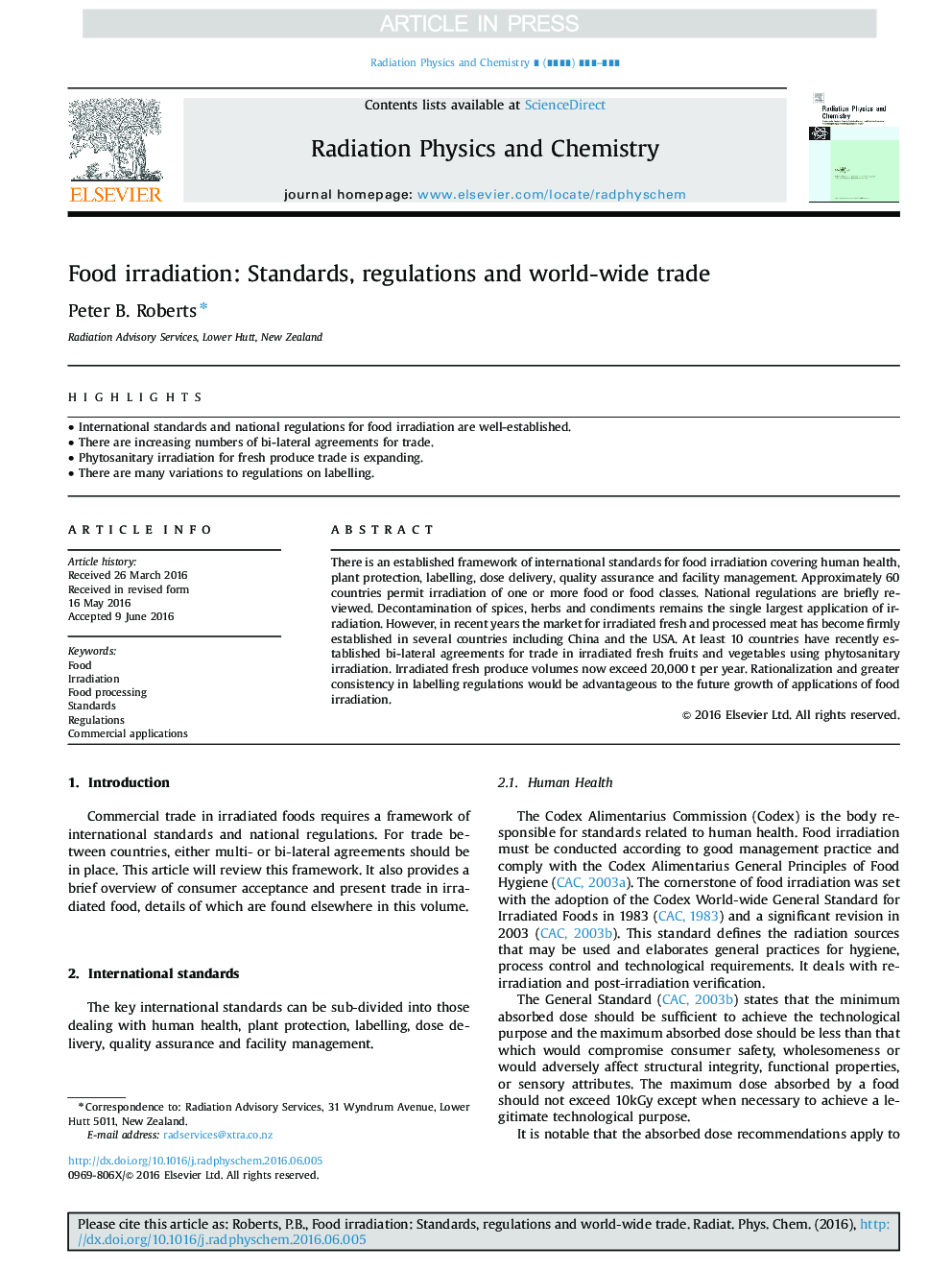| Article ID | Journal | Published Year | Pages | File Type |
|---|---|---|---|---|
| 5499359 | Radiation Physics and Chemistry | 2016 | 5 Pages |
Abstract
There is an established framework of international standards for food irradiation covering human health, plant protection, labelling, dose delivery, quality assurance and facility management. Approximately 60 countries permit irradiation of one or more food or food classes. National regulations are briefly reviewed. Decontamination of spices, herbs and condiments remains the single largest application of irradiation. However, in recent years the market for irradiated fresh and processed meat has become firmly established in several countries including China and the USA. At least 10 countries have recently established bi-lateral agreements for trade in irradiated fresh fruits and vegetables using phytosanitary irradiation. Irradiated fresh produce volumes now exceed 20,000Â t per year. Rationalization and greater consistency in labelling regulations would be advantageous to the future growth of applications of food irradiation.
Related Topics
Physical Sciences and Engineering
Physics and Astronomy
Radiation
Authors
Peter B. Roberts,
